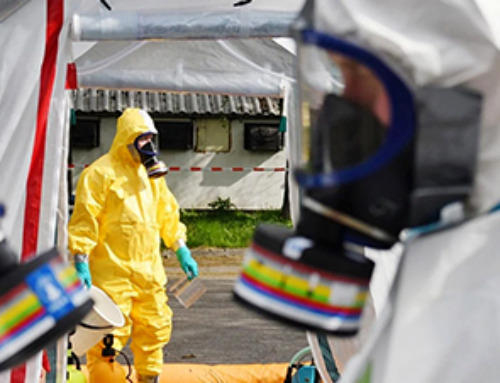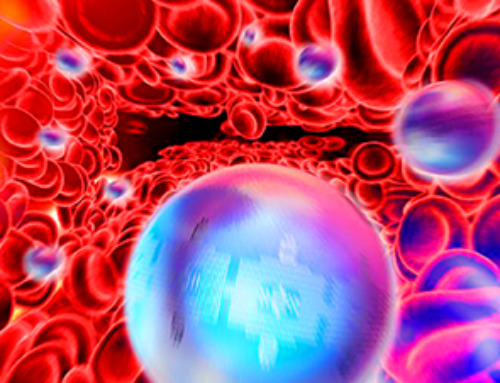The question of how living organisms emerged from non-living matter remains one of the most profound mysteries in science. Despite numerous theories, a conclusive explanation remains elusive. This is hardly unexpected, considering these events occurred three to four billion years ago, under Earth's drastically different ancient conditions.
Justifying hypotheses with experimental data
"Over this vast period of time, evolution has thoroughly obliterated the traces that lead back to the origins of life," says Roland Riek, Professor of Physical Chemistry and Associate Director of ETH Zurich's new interdisciplinary Centre for Origin and Prevalence of Life. Science has no choice but to formulate hypotheses – and to substantiate them as thoroughly as possible with experimental data.
For years, Riek and his team have been pursuing the idea that protein-like aggregates, known as amyloids, might have played an important role in the transition between chemistry and biology. Riek's research group's first step was to demonstrate that such amyloids can be formed relatively easily under the conditions that probably prevailed on the early Earth: in the laboratory, all it takes is a little volcanic gas (as well as experimental skill and a lot of patience) for simple amino acids to combine into short peptide chains, which then spontaneously assemble into fibers.
Precursor molecules of life
Later, Riek's team demonstrated that amyloids can replicate themselves – which means that the molecules fulfill another decisive criterion for being considered precursor molecules of life. And now the researchers have taken the same line for a third time with their latest study, in which they show that amyloids are able to bind with molecules of both RNA and DNA.
These interactions are partly based on electrostatic attraction, since some amyloids are – at least in places – positively charged, while the genetic material carries a negative charge, at least in a neutral to acidic environment. However, Riek and his team have also noticed that the interactions also depend on the sequence of the RNA and DNA nucleotides in the genetic material. This means they might represent a kind of precursor to the universal genetic code that unites all living beings.
Increased stability as a major advantage
And yet: "Although we see differences in how the RNA and DNA molecules bind with the amyloids, we don't yet understand what these differences mean," Riek says. "Our model is probably still too simple." That's why he sees another aspect of the results as particularly important: when the genetic material attaches itself to amyloids, both molecules gain stability. In ancient times, this increased stability may have proved to be a great advantage.
This is because back then, in the so-called primordial soup, biochemical molecules were very dilute. Contrast this with today's biological cells, within which these molecules are tightly packed together. "Amyloids have the proven potential to increase the local concentration and order of nucleotides in an otherwise dilute disordered system," write Riek's researchers in their recently published article.
Riek points out that although competition is central to Darwin's theory of evolution, cooperation has also played a major evolutionary role. Both classes of molecules benefit from the stabilizing interaction between amyloids and RNA or DNA molecules because long-lived molecules accumulate more strongly over time than unstable substances. It may even be that molecular cooperation, rather than competition, was the decisive factor in the emergence of life. "After all, there was likely no shortage of space or resources back then," Riek says.
Reference: "An Analysis of Nucleotide–Amyloid Interactions Reveals Selective Binding to Codon-Sized RNA" by Saroj K. Rout, Riccardo Cadalbert, Nina Schröder, Julia Wang, Johannes Zehnder, Olivia Gampp, Thomas Wiegand, Peter Güntert, David Klingler, Christoph Kreutz, Anna Knörlein, Jonathan Hall, Jason Greenwald and Roland Riek, 2 October 2023, Journal of the American Chemical Society.
DOI: 10.1021/jacs.3c06287
News
We May Never Know if AI Is Conscious, Says Cambridge Philosopher
As claims about conscious AI grow louder, a Cambridge philosopher argues that we lack the evidence to know whether machines can truly be conscious, let alone morally significant. A philosopher at the University of [...]
AI Helped Scientists Stop a Virus With One Tiny Change
Using AI, researchers identified one tiny molecular interaction that viruses need to infect cells. Disrupting it stopped the virus before infection could begin. Washington State University scientists have uncovered a method to interfere with a key [...]
Deadly Hospital Fungus May Finally Have a Weakness
A deadly, drug-resistant hospital fungus may finally have a weakness—and scientists think they’ve found it. Researchers have identified a genetic process that could open the door to new treatments for a dangerous fungal infection [...]
Fever-Proof Bird Flu Variant Could Fuel the Next Pandemic
Bird flu viruses present a significant risk to humans because they can continue replicating at temperatures higher than a typical fever. Fever is one of the body’s main tools for slowing or stopping viral [...]
What could the future of nanoscience look like?
Society has a lot to thank for nanoscience. From improved health monitoring to reducing the size of electronics, scientists’ ability to delve deeper and better understand chemistry at the nanoscale has opened up numerous [...]
Scientists Melt Cancer’s Hidden “Power Hubs” and Stop Tumor Growth
Researchers discovered that in a rare kidney cancer, RNA builds droplet-like hubs that act as growth control centers inside tumor cells. By engineering a molecular switch to dissolve these hubs, they were able to halt cancer [...]
Platelet-inspired nanoparticles could improve treatment of inflammatory diseases
Scientists have developed platelet-inspired nanoparticles that deliver anti-inflammatory drugs directly to brain-computer interface implants, doubling their effectiveness. Scientists have found a way to improve the performance of brain-computer interface (BCI) electrodes by delivering anti-inflammatory drugs directly [...]
After 150 years, a new chapter in cancer therapy is finally beginning
For decades, researchers have been looking for ways to destroy cancer cells in a targeted manner without further weakening the body. But for many patients whose immune system is severely impaired by chemotherapy or radiation, [...]
Older chemical libraries show promise for fighting resistant strains of COVID-19 virus
SARS‑CoV‑2, the virus that causes COVID-19, continues to mutate, with some newer strains becoming less responsive to current antiviral treatments like Paxlovid. Now, University of California San Diego scientists and an international team of [...]
Lower doses of immunotherapy for skin cancer give better results, study suggests
According to a new study, lower doses of approved immunotherapy for malignant melanoma can give better results against tumors, while reducing side effects. This is reported by researchers at Karolinska Institutet in the Journal of the National [...]
Researchers highlight five pathways through which microplastics can harm the brain
Microplastics could be fueling neurodegenerative diseases like Alzheimer's and Parkinson's, with a new study highlighting five ways microplastics can trigger inflammation and damage in the brain. More than 57 million people live with dementia, [...]
Tiny Metal Nanodots Obliterate Cancer Cells While Largely Sparing Healthy Tissue
Scientists have developed tiny metal-oxide particles that push cancer cells past their stress limits while sparing healthy tissue. An international team led by RMIT University has developed tiny particles called nanodots, crafted from a metallic compound, [...]
Gold Nanoclusters Could Supercharge Quantum Computers
Researchers found that gold “super atoms” can behave like the atoms in top-tier quantum systems—only far easier to scale. These tiny clusters can be customized at the molecular level, offering a powerful, tunable foundation [...]
A single shot of HPV vaccine may be enough to fight cervical cancer, study finds
WASHINGTON -- A single HPV vaccination appears just as effective as two doses at preventing the viral infection that causes cervical cancer, researchers reported Wednesday. HPV, or human papillomavirus, is very common and spread [...]
New technique overcomes technological barrier in 3D brain imaging
Scientists at the Swiss Light Source SLS have succeeded in mapping a piece of brain tissue in 3D at unprecedented resolution using X-rays, non-destructively. The breakthrough overcomes a long-standing technological barrier that had limited [...]
Scientists Uncover Hidden Blood Pattern in Long COVID
Researchers found persistent microclot and NET structures in Long COVID blood that may explain long-lasting symptoms. Researchers examining Long COVID have identified a structural connection between circulating microclots and neutrophil extracellular traps (NETs). The [...]





















